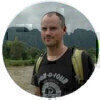VOC measurements by IR cameras: Operational boundaries and model estimations
Infrared (IR) gas finder cameras are increasingly used in leak detection and repair (LDAR) surveys for detecting fugitive volatile organic compound (VOCs) emissions from process components. In order to use the camera for identifying leaking process components which have to be repaired, it is important to:
(1) operate the camera under conditions in which the IR camera's detection limit is expected to be lower than LDAR's repair thresholds;
(2) use the camera for determining whether a leaking inaccessible or remote process component exceeds its repair threshold.
In the present study, a laboratory facility was developed and used for determining the IR camera's detection limit as a function of multiple operating conditions, namely wind speed, viewing distance, and temperature difference between background and gas cloud. Operational boundaries were derived from the laboratory data for six different process components to ensure that the IR camera's detection limit is lower than the repair thresholds in LDAR. For determining whether a leak is inaccessible or the remote process component exceeds its repair threshold, an emission model was developed and validated with field data obtained in The Netherlands.
Free to watch
Sessions are free to watch. Please login to view this session or create an account.
Speakers

Dr John Korsman (DCMR environmental protection agency)
Events
May 05 2024 Seville, Spain
May 13 2024 Munich, Germany
May 23 2024 Beijing, China
May 23 2024 Beijing, China
Jun 10 2024 Algiers, Algeria









